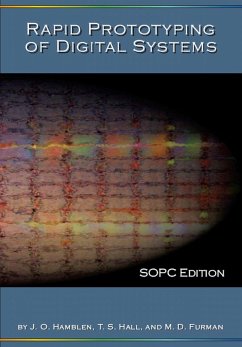RAPID PROTOTYPING OF DIGITAL SYSTEMS provides an exciting and challenging environment for rapidly adapting System-on-a-Programmable Chip (SOPC) technology to existing designs or integrating the new design methods into a laboratory component for digital logic, computer and embedded-design curriculums. New to this edition is an introduction to embedded operating systems for SOPC designs. Featuring four accelerated tutorials on the Quartus II and Nios II design environments, this edition progresses from introductory programmable logic to full-scale SOPC design seamlessly integrating hardware implementation, software development, operating system support, state-of-the-art I/O, and IP cores. This edition features Altera's new 7.1 Quartus II CAD and Nios II SOPC tools and includes projects for Altera's DE1, DE2, UP3, UP2, and UP1 FPGA development boards.
Dieser Download kann aus rechtlichen Gründen nur mit Rechnungsadresse in A, B, BG, CY, CZ, D, DK, EW, E, FIN, F, GR, HR, H, IRL, I, LT, L, LR, M, NL, PL, P, R, S, SLO, SK ausgeliefert werden.

